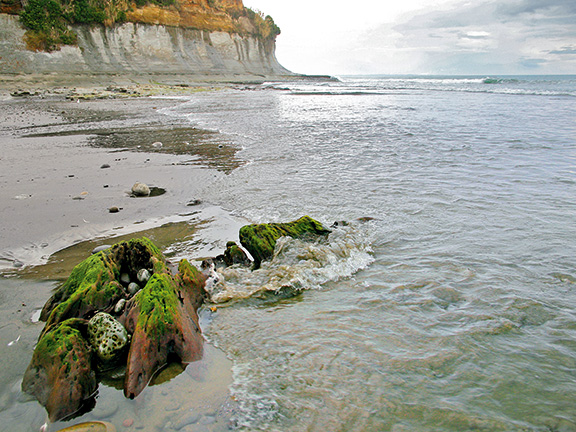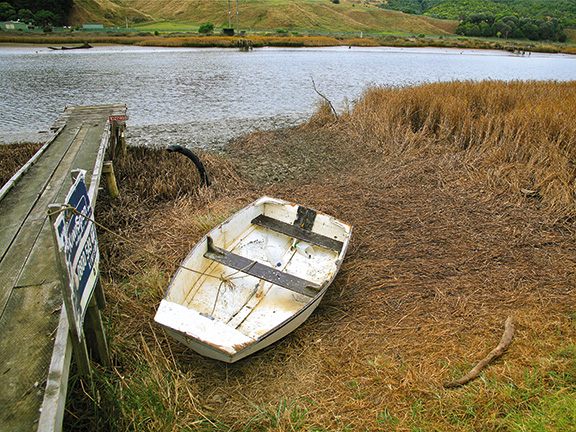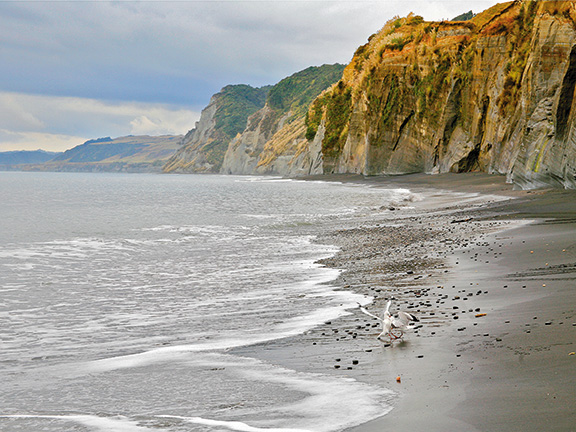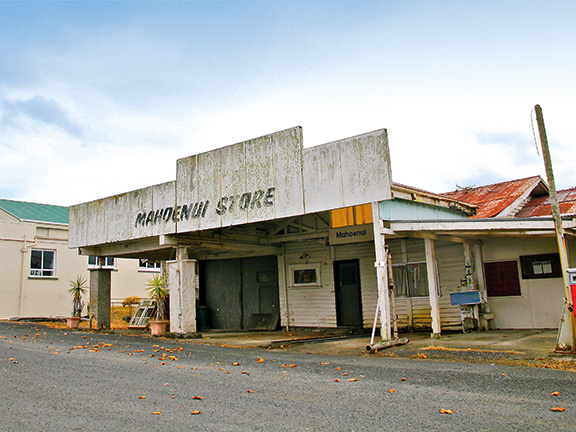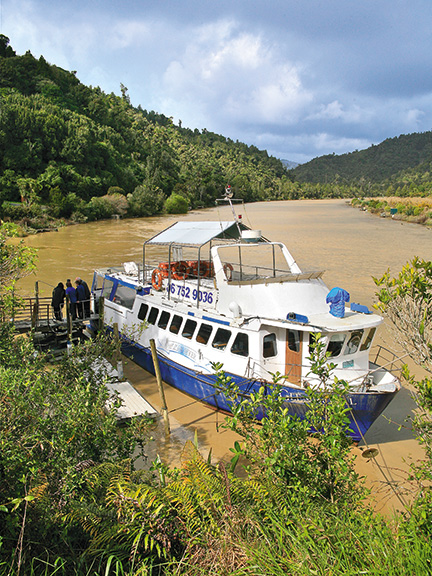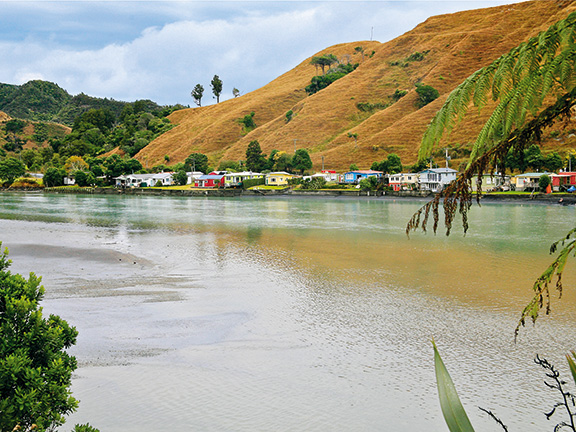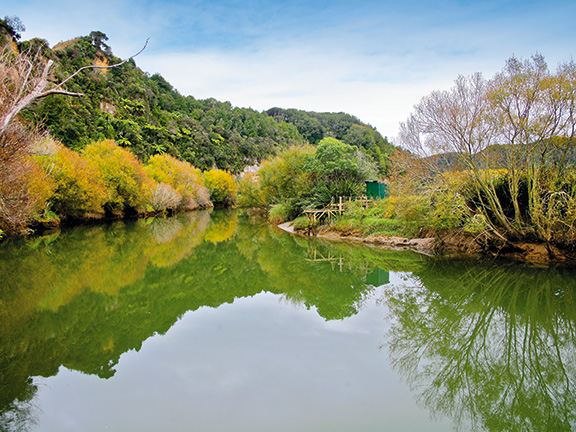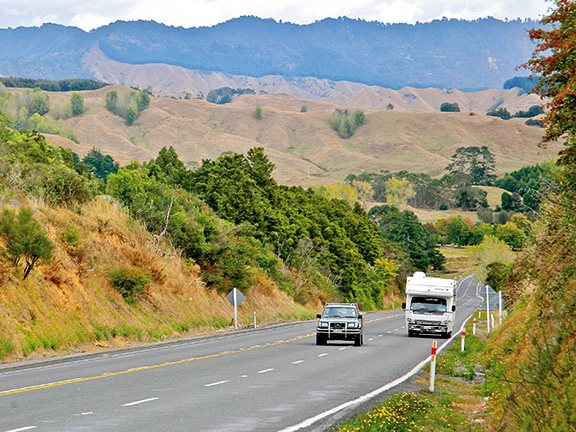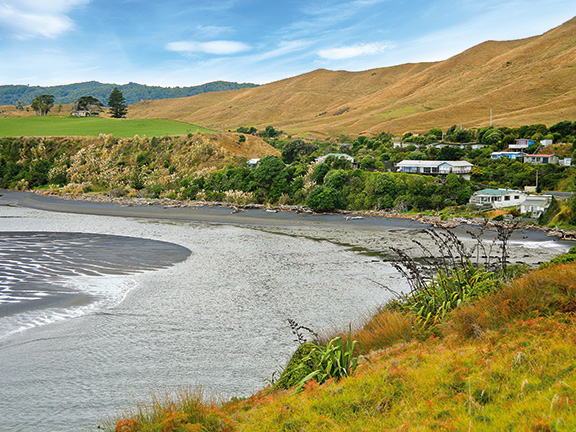The stretch of State Highway 3 (SH3) between Te Kuiti and Taranaki has always been difficult for motorists over the years. Massive land movements at Mahoenui; flooding in the Uruti Valley; slips in the Awakino Gorge; rock falls from unstable cliffs; and the regular blockages from large trucks and tankers coming to grief on the tight corners contribute to this highway being a real challenge, especially during winter.
Yet it is this very real, wild aspect that gives this route its charm. While most of us drive this route quickly in our headlong rush to get to Auckland, it really deserves to be savoured at leisure.
The fact that major films such as The Hobbit, Vigil, The Piano and The Last Samurai had scenes filmed at locations along this highway should be a good reason to stop occasionally and explore, even if it's just for a few minutes.
The journey begins…
My own journey starts at the major junction, where SH1 from Taumarunui joins SH3 south of Te Kuiti, for an easy drive into Pio Pio. I always stop at the berry garden here for three chips of strawberries when in season. Two of them are usually gone by the time I hit the Awakino Gorge.
Pio Pio itself is a pretty town servicing the large farms that surround it. Coming from New Plymouth, this is the first comfort stop – a chance for an ice cream or coffee or to just stretch our legs.
One of the sad aspects of driving in this type of landscape comes home in the Mangaotaki Gorge section of SH3. It is the scene of a recent tragic accident where large boulders from an unstable cliff face came down on to the road at the exact moment a car was passing beneath.
From here the highway climbs to its highest point, the Mahoenui Hill, with expansive views on both sides. In 1989, a massive landslide closed the route (both southbound and northbound) for four months, diverting traffic through Ohura to Ahititi. On the downside of the hill is the first stretch of straight road that creates a type of vanishing point to the valley below.
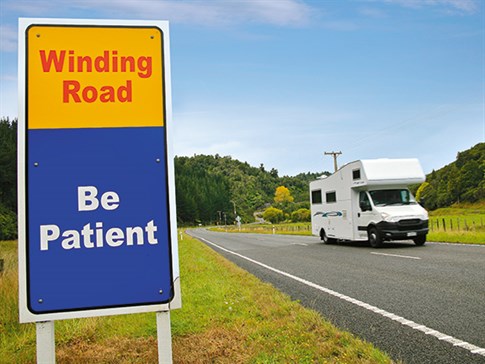
At Mahoenui, there is a collection of old buildings that look abandoned, although there are still signs of life around. As I left, I couldn't help thinking what a great movie location it would make – with a little more weathering and some period props, it would be perfect for a thriller or a road trip movie.
More twists and turns and another straight piece of highway brings me to the first of two scenic road tunnels. This is the entrance to the Awakino gorge, 20 minutes of 35km and 45km hairpin bends; bush covered sides and glimpses of the Awakino River below the road.
I have a favorite spot here where I always stop for a break in summer. It is refreshing to sit with your feet in crystal clear water while trucks and tankers thunder past overhead.
Just short of nearby Mokau, if you look up to the hills on your right, you will see Maniaroa Marae. This is the last Waikato marae before entering Taranaki as the Mokau River is the boundary between the Waikato region and Taranaki.
In the adjoining cemetery at Maniaroa, you can see the anchor stone from the original Tainui Waka that now rests in Kawhia. The pre European and colonial history in this area can be experienced at the Tainui Museum in Mokau.
The coastline from Mokau to Tongaporutu is now noticeably wild and rugged, the result of constant erosion from the sea. A few years ago, 'The Three Sisters' became two, then reappeared again as three when another sentinel of land became separated from the mainland by erosion from the sea.
The Tongaporutu bachs straddle the riverbank and continue to be a well-photographed icon from the highway as you come down to the bridge. After crossing the large concrete bridge, turn left and continue past the baches to another icon – the White Cliffs Walkway. The walkway passes many ancient pa sites, their outlines clearly visible. Once there were 19 of them but most have succumbed to the sea.
The next challenge is Mt Messenger and the second scenic road tunnel. Road improvements have made the ascent and descent a lot easier but care is still needed on the tight bends. Mt Messenger and the Uruti Valley that follows is very prone to slips and flooding in winter and is often closed to traffic.
The final run into Waitara is easy with an optional stop at the Methanex Visitor Centre for an interesting display of the production of methanol and its uses.
This much-maligned northern route out of Taranaki has its troubles and challenges but it's all worth it for the spectacular scenery, iconic and original experiences, and a history that gives this road trip a character that's hard to find elsewhere.
For more motorhome reviews, subscribe to Motorhomes, Caravans & Destinations magazine here.

